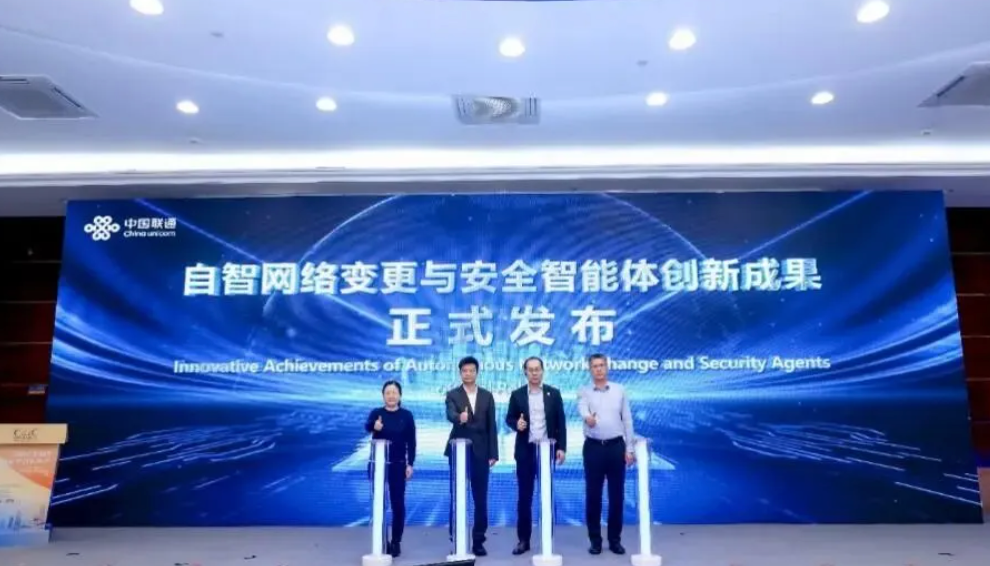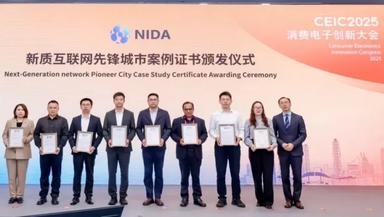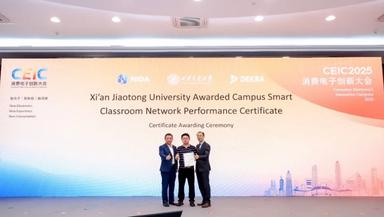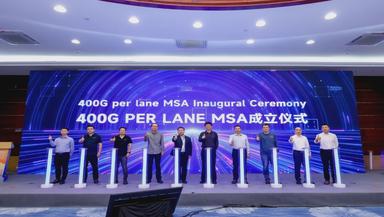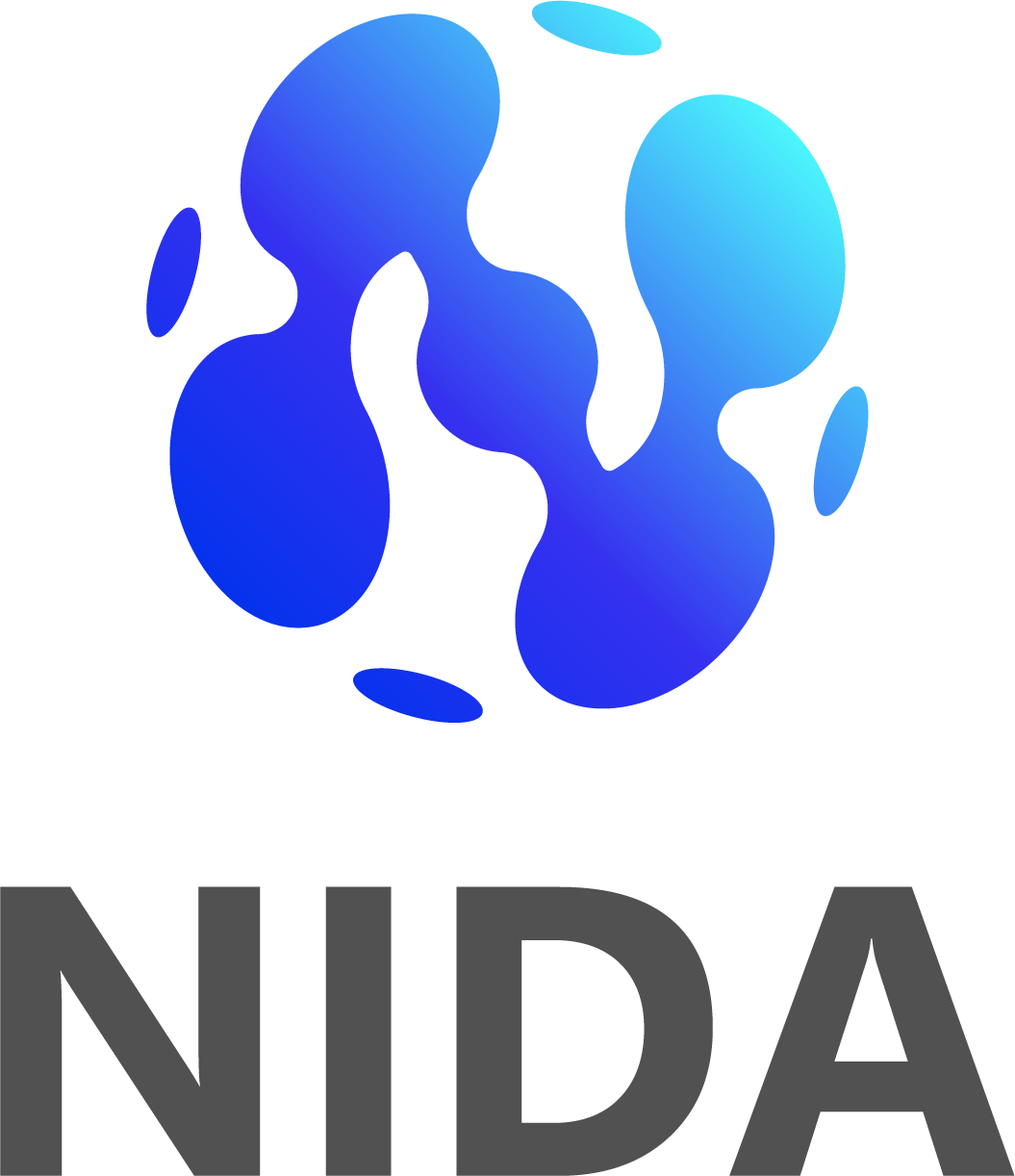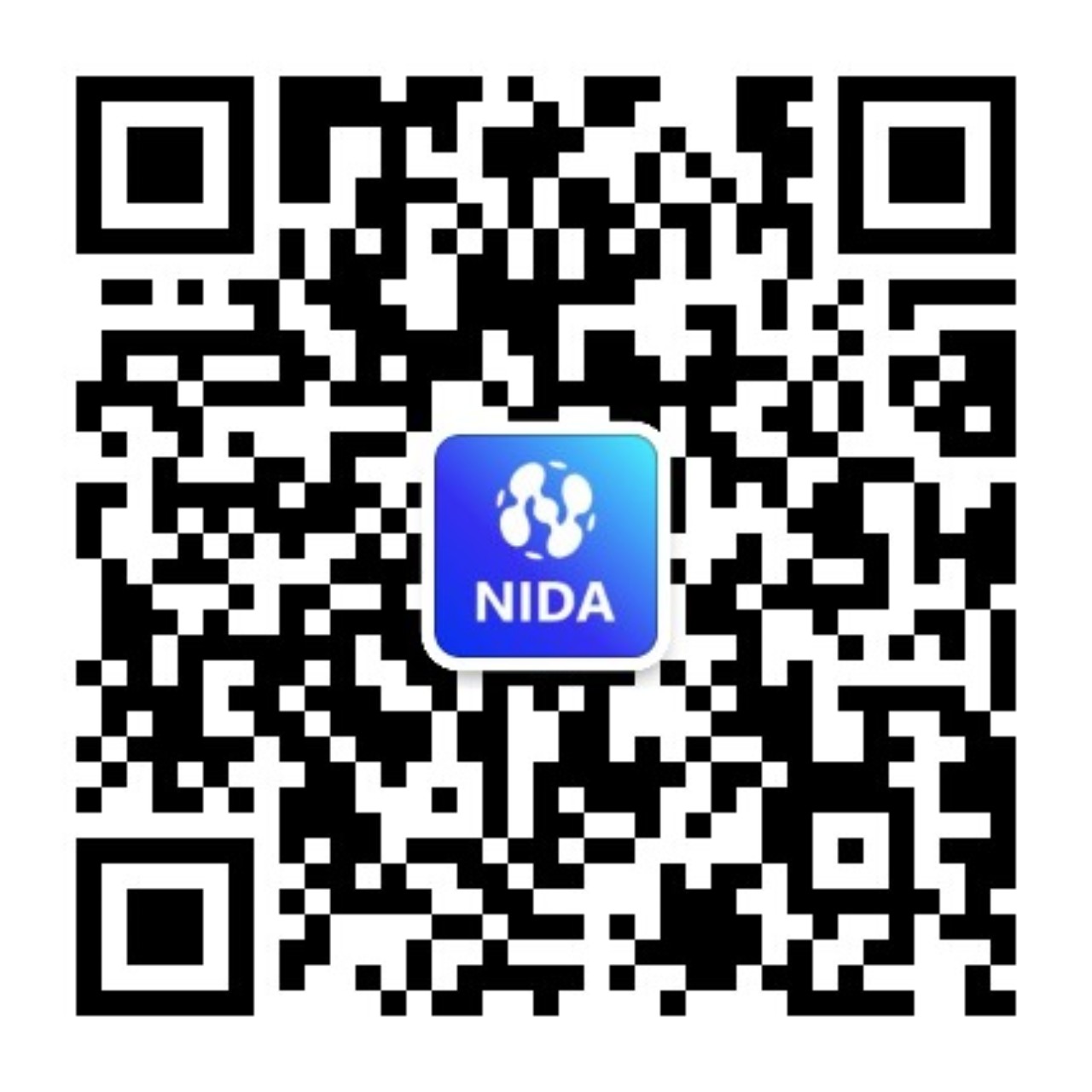2025 Call for Final Action:Move to Native IPv6-Only
Latif LadidFounder & President, IPv6 ForumChair, AI & Blockchain Initiative at Global ForumCo-Founder & co-Chair, IEEE Future Networks World ForumEmeritus Trustee, Internet Society
2025-11-18
24
[Shenzhen, China, November 8, 2025] During the 3rd Network Innovation and Development Conference, China Unicom Research Institute, together with Huawei and China Unicom Shandong Branch (hereinafter referred to as "Shandong Unicom"), released the "Innovation Achievements of Self-Intelligent Network Change and Security Agent". Set a new benchmark for carriers' self-intelligent network intelligence applications.China Unicom Research Institute and Huawei jointly carried out IP self-intelligent network innovation practices, demonstrated the intelligent O&M platform architecture, and successfully responded to network changes and router APT defense (APT : Advanced Persistent Threat) in Jinan intelligent MAN of Shandong Unicom. (Advanced long-term threats) Completed the pilot verification of change agent and security agent in two scenarios.Change Agent: Online review, worry-freeShandong Unicom took the lead in deploying the change agent in the IP network cutover process. Through configuration check and online simulation, the network configuration change protection line is built, and the closed-loop intelligent decision-making is implemented.Through deep learning of the AI large model, the configuration check integrates China Unicom's mobile network specifications and Huawei's communication experience, improving the check accuracy from 70% to over 95%. The online simulation system has built-in Huawei CMOS ( Centralized Model-Operation Simulation Configuration (centralized model calculus) algorithms to accurately simulate route and service flow changes, identify change risks in advance, and ensure zero errors on the dynamic network.The network change scenario is one of the high-value self-intelligent network scenarios developed by the TM Forum, an authoritative organization in the global communications industry, and jointly developed by industry partners. Han Sai, chief researcher of the Basic Network Technology Research Department of China Unicom Research Institute, said: "According to the self-intelligence network level questionnaire released by the TM Forum, the pilot application of the Change Agent in Shandong Unicom has reached the L4 level in the self-assessment of key steps such as "intent understanding and implementation" and "network change solution evaluation and decision-making". It marks the outstanding results of this innovation practice. "Security Agent: Full-stack awareness, high security and stabilityChina Unicom Research Institute and Huawei jointly build an APT intelligent defense system, innovatively develop the intrusion detection technology of "white-and-black detection", and establish file, port, and process whitelists and behavior baselines in the R&D state. More than 10 security models are built in the running state. Identify account, file, and process exceptions within minutes.Wang Zelin, Director of the Basic Network Technology Research Department of China Unicom Research Institute, said: "This innovative pilot application in Shandong Unicom is a milestone in the evolution to L4 self-intelligent networks. In the future, China Unicom Research Institute will build more intelligent applications based on the intelligent O&M platform architecture and focus on L4 high-value scenarios of self-intelligent networks." Wang Hui, President of the NCE Data Communication Domain, Huawei Data Communication Product Line, said: "Huawei will deepen its strategic cooperation with China Unicom in the self-intelligence network field, apply AI technologies to enable networks, continuously create value for customers, and further promote the evolution of networks to advanced self-intelligence. "The innovative practice of China Unicom Research Institute, together with Huawei and Shandong Unicom, not only demonstrates the advanced level of the intelligent O&M platform in security protection and intelligent management, but also provides a replicable technical benchmark for the industry, helping operators evolve to advanced self-intelligent networks.
2025-11-18
52
On November 8, the 3rd Network Innovation and Development Conference hosted by the Global Fixed Network Innovation Alliance (NIDA) was held in Shenzhen. Under the theme of "Crossing Industry Boundaries and Unleashing Innovation Momentum", the conference attracted city representatives from China and overseas, industry experts, and representatives of international organizations to focus on consensus building, standard development, and practice promotion. Focusing on the practice path, challenge opportunity and future vision of the next generation network in pioneer city construction, explore the new path of industry development. Wu Hequan and Liu Yunjie, academicians of the Chinese Academy of Engineering, attended the meeting. This event brings together global intelligence to comprehensively showcase the achievements and future blueprints of new Internet pioneer cities, and inject powerful impetus into the digital transformation of global cities.The Congress set up a "Certificate Awarding Ceremony for New Quality Internet Pioneer Cities" to select and promote city-level network construction practices with forward-looking and exemplary effects. Among them, Future Networks, jointly with the Institute of Computing Technology of the Chinese Academy of Sciences, the Computer Network Information Center of the Chinese Academy of Sciences, and Jiangsu Zhinet Technology Co., Ltd., jointly declared the "Application of Deterministic Network Management and Control Technology and Service-oriented Network Infrastructure Platform" project, relying on the core technologies of precise control and intelligent resource allocation of deterministic networks. Achieved stable and efficient network operation and flexible service customization, and was successfully selected into the case library of the New Internet Pioneer City Construction Action Plan.Case HighlightsDeterministic network management and control technology:Low-latency, low-jitter, and high-reliability network transmissionTechnological breakthroughs: Breaking the Traditional Bottleneck and Building a New TypeDeterministic network technology breaks through traditional bottlenecks and builds new networks that feature long-distance lossless bearer, high rate, and low jitter.Performance indicators: Leading the world for high-quality transmissionHuawei is the first in the industry to achieve low packet loss rate and high transmission efficiency, meeting the urgent requirements for customizable and high-performance networks in multiple key fields.Application scenario: Multi-line areas to determine the experienceBuild differentiated service networks based on service levels for vertical industries that have high network requirements, such as industry and energy, to improve the success rate in scenarios such as remote surgery.Service-oriented network infrastructure platform:Provides flexible, efficient, and secure network services.Capability decoupling and on-demand invocationEncapsulates security and network capabilities as orchestratable services and supports one-click invocation. Enterprises can subscribe to packages on demand, reducing O&M costs by 30%.AI enablement and proactive immunizationIntegrate the large security model to predict faults. The edge-cloud synergy architecture supports second-level policy delivery for large-scale devices.Ecosystem co-construction and secure hostingLaunch secure hosting to provide full-cycle security assurance for small and medium-sized enterprises.At the end of the conference, under the joint witness of all the participants, the launch ceremony of "New Chapter of New Internet Pioneer City 2026" was grandly held. Future Network is honored to be invited to join the stage with representatives from pioneer cities, international organizations, well-known enterprises and research institutes at home and abroad to participate in the lamppost lighting ceremony, which symbolizes the future network's role in the construction of new quality Internet pioneer cities and the exploration of new network service-oriented models. Promote the in-depth integration of new Internet technology innovation and urban practices.As Liu Yunjie, an academician of the Chinese Academy of Engineering, said: "Deterministic networks are the'hydro-coal' of the AI era, and security is its unshakable foundation. Security is the foundation, deterministic network management and control technology is the core to ensure stable network operation, and the service-oriented network infrastructure platform is the cornerstone. Future Network has been committed to related construction and development. With the National Key Science and Technology Infrastructure - the Future Network Test Facility (CENI) as the anchor point, we have deepened the integration and innovation of AI and security technologies, used AI algorithms to intelligently analyze and predict network traffic, cope with security threats, and built a secure foundation for digital transformation. In the future, our institute will make every effort to upgrade the network service-oriented platform, break through the traditional framework, realize resource collaboration, provide users with flexible and personalized services, and better support the development of smart cities.
2025-11-17
25
Recently, the Global Fixed Network Innovation Alliance (NIDA) hosted the 3rd Network Innovation and Development Conference in Shenzhen, with the theme of "Crossing Industry Borders and Unleashing Innovation Momentum", attracting industry representatives from government departments, basic telecommunications enterprises, equipment manufacturers, universities, and scientific research institutions. Wu Hequan, an academician of the Chinese Academy of Engineering, pointed out in his speech at the conference that AI will move from algorithm innovation to systematic application in the whole society, and networks will move from "connecting people" to "connecting intelligence".Official release of industry network standards:Education and Healthcare Usher in New Network StandardsIn recent years, NIDA has made great achievements in standards practice. Following the release of the world's first self-intelligent network construction standard for the education industry in July 2025, NIDA again released and interpreted new standards for campus network construction in the education and healthcare industries.On campus network, the number of network devices and terminals is increasing, and the service requirements are becoming more and more complex. The teachers and students have higher and higher requirements on network service quality. Campus networks are facing the following challenges: The network coverage covers multiple dimensions, such as basic networks, network applications, network security, network O&M, and network energy saving. However, the network construction mode still relies on traditional experience verification and lacks a scientific network construction evaluation system. When high-quality teaching applications, such as HD conferencing, VR/AR, and access of a large number of terminals, the existing network architecture cannot meet fast-evolving service requirements or effectively improve O&M efficiency. The College Campus Network Evaluation Indicators and Test Methods released this time builds a standardized evaluation system for the education industry network construction for the first time. The quantitative indicators and scientific test methods provide authoritative technical guidance for campus network planning, construction, and O&M, and will effectively promote the intelligent upgrade of education informatization infrastructure.The healthcare industry's need for the network is comprehensive and systematic, much more than "faster." It requires the network to transform from a connection tool to a reliable, intelligent, and convergent medical service bearer platform. In the hospital, the network supports thousands of medical devices. (Monitors, Infusion Pumps, Ventilators, Vital Sign Sensors, etc.) Provides stable and low-power access, ultra-large bandwidth, deterministic low latency (in milliseconds), and reliability of over 99.999%. To meet the requirements of remote robotic surgery, real-time image transmission of mobile ultrasound/radiology equipment, data synchronization during emergency and first aid, and real-time retrieval and 3D reconstruction of high-definition medical images (such as pathology section, CT, and MRI). Non-contact monitoring of patients requires wireless networks to integrate sensing capabilities and evolve to synaesthesia-integrated networks. In addition, network capabilities need to be extended from in-hospital to out-of-hospital to stably support telemedicine, Internet hospital, and home monitoring scenarios, breaking geographical restrictions, and building a hospital-community-family integrated continuous medical service system. The Smart Hospital Campus Network Technical Requirements released this time analyzes the network requirements of various service scenarios of hospitals, proposes a network architecture that meets the requirements of future smart hospitals, specifies the network technical requirements that smart hospitals need to meet, and provides a clear implementation path for smart hospitals to build new networks.Collaboration between industry and education: Xi'an Jiaotong University Awarded IndustryFirst Campus Network Assessment CertificationDriven by the College Campus Network Evaluation Indicators and Test Methods, many top universities have participated in the new standard construction process and collaborated to promote network technology innovation and standards implementation. DEKRA and the Global Fixed Network Innovation Alliance (NIDA) focus on the smart classroom network scenario of Xi'an Jiaotong University and conduct systematic evaluation from six core dimensions: all-domain security, energy-saving, high-speed network, defined experience, ubiquitous connectivity, and autonomous network. After strict tests and verification, Xi'an Jiaotong University's campus network performance not only surpassed the industry benchmark, but also won the industry's first campus network assessment certificate for its excellent performance. This milestone indicates that the university has established an industry model in smart classroom network planning, construction, and O&M, and provides replicable and popularized best practices for university network standardization.Zhang Zhe, head of the core network of the Innovation Harbor Campus of Xi'an Jiaotong University Network Information Center, said: "It is an honor to receive a certificate of authority from DEKRA and NIDA at this global innovation event. This is the acknowledgment of Xi'an Jiaotong University's informatization construction achievements, but also a kind of encouragement. "Looking forward to the future, network evolution in the AI era is not only a technical issue, but also a system issue. NIDA calls on all parties in the industry to work together to find the "maximum common divisor" of network development and build an open and win-win ecosystem. With the release and implementation of network standards in the education and healthcare industries and the promotion of practical cases like Xi'an Jiaotong University, the next-generation network technologies will enable vertical industries and promote digital transformation and upgrade.
2025-11-17
45
[Shenzhen, China, November 8, 2025] The Third NIDA Network Innovation and Development Conference 2025 was successfully held in Shenzhen, Guangdong. As an industry event in the global fixed network innovation field, the conference brought together representatives and technical experts from scientific research institutions, industry organizations, and leading enterprises to conduct in-depth exchanges on "Next Generation Network Development in the AI Era", anchoring the future network evolution path. Among them, an important outcome of the General Assembly is the formal establishment of "400G Per Lane MSA ( Multi-Source Agreement )". This MSA is initiated by China Mobile and brings together Alibaba, Tencent, Marvel, VIAVI, Tianfu Communications, Shengke, Optical Xun Technology, Optical Library Technology, Wanli Eye, Lixun, and ZTE. It is the core ecosystem partner of the Ethernet industry chain such as Germany Technologies and Huawei. We are committed to breaking bandwidth bottlenecks in the AI data center field and jointly promoting the development and large-scale application of next-generation ultra-broadband Ethernet technologies.Cheng Weiqiang, deputy director of the Institute of Basic Network Technology of China Mobile Research Institute, explained the industry background and challenges of the establishment of the 400G Per Lane MSA, as well as the work objectives and cooperation initiatives of the 400G Per Lane MSA.Core bottlenecks of AI clusters: High-Speed Interconnection Faces 400G Signal ChallengesFacing the computing challenges brought by large-scale models with hundreds of billions or even trillions of parameters, building super-large-scale AI clusters has become an industry consensus. In this process, the performance of ultra-high-speed Ethernet interconnection directly determines the efficiency and scale of cluster computing power output, and becomes the core basic technology to support the sustainable development of the AI industry. High-speed single-channel interconnection is the key technology.Currently, technology development is facing a key generational turning point. For example, 800G Ethernet relies on the single-channel 112G interconnection technology ( 8×112G/lane ) , 1.6T Ethernet relies on the single-channel 224G interconnection technology (8×224G/lane )), while the future 3.2T Ethernet requires the single-channel 448G interconnection technology (8×448G/lane )). As the intelligent computing center has ever-increasing requirements on Ethernet rates, 1.6T Ethernet based on the single-channel 224G interconnection technology has been put into commercial use this year. The global industry is gradually focusing on the development of the next-generation single-channel 448G technology. To this end, NIDA launched the 400G per lane MSA working group to promote the maturity and standardization of the single-channel 448G interconnection technology.However, doubling the rate also brings severe signal integrity challenges. Problems such as inter-channel crosstalk and insertion loss deteriorate exponentially, making system design more difficult.This breakthrough requires a collaborative design framework that spans chips, packages, channels, and systems, and is restructured around the core proposition of "bandwidth-signal-to-noise ratio balance". This breakthrough will not only affect the success or failure of single-point technologies, but also define the competitive landscape and evolution path of next-generation AI infrastructure.Breaking the Ecosystem Barriers : 400G/lane MSA Builds Unified Interfaces for Multi-vendor InteroperationData centers are rapidly evolving to 400G/lane or 800G/1.6T systems. However, interoperability between multi-vendor devices has become a key bottleneck for large-scale industry deployment. Solutions independently developed by vendors are prone to divergence in technology paths and form ecological barriers, which not only increases the cost and complexity of system integration, but also slows down the popularization of the overall technology.Emphasizing openness and collaboration, 400G Per Lane MSA is committed to bringing together the world's leading forces in chip design, material science, and system architecture. Based on the advanced technology path, 400G Per Lane MSA has reached an industry consensus in fields such as optical-electrical-layer protocols and physical-layer interface standards. This lays a foundation for building an open and reliable 1.6T/3.2T high-speed Ethernet ecosystem based on single-channel 400G and provides an open and healthy industry ecosystem. and promote the adoption of the consensus by mainstream international standards organizations such as IEEE.Build a new ecosystem based on open standards: Industry launches 400G/lane interoperability initiative400G Per Lane MSA advocates leading global technology enterprises to develop open and unified interface standards to build a new ecosystem for next-generation data center interconnection. This initiative marks a new phase of industrial synergy development and will lay a solid foundation for 800G and higher-speed interconnection.The MSA working group will focus on the core physical layer challenges of single-channel 400G high-speed interconnect technology, covering the following key areas:No.1 Develop 400G/lane electrical interface standards, covering application scenarios such as chip-to-chip, chip-to-module, cable, and backplane.No.2 Establish 400G/lane optical interface specifications and focus on optimizing short-distance optical connection performance.No.3 Specify key technical specifications such as signal integrity, channel characteristics, and equalization requirements.No.4 explores innovative modulation and coding schemes to achieve the best balance between performance and power consumption.This initiative has received positive responses from enterprises in all sectors of the industry chain, including chip suppliers, optical component and optical module manufacturers, equipment vendors, and cloud service providers.Based on the principles of openness and collaboration, MSA is committed to pooling global industry wisdom to promote the standard development process. To this end, the MSA will build an open collaboration platform that will provide key support to the industry such as interoperability testing, joint technology assessment, and expertise sharing.NIDA 400G Per Lane MSA invites partners in the global industry chain to join in this open process and draw a blueprint for next-generation data interconnection.
2025-11-16
59

